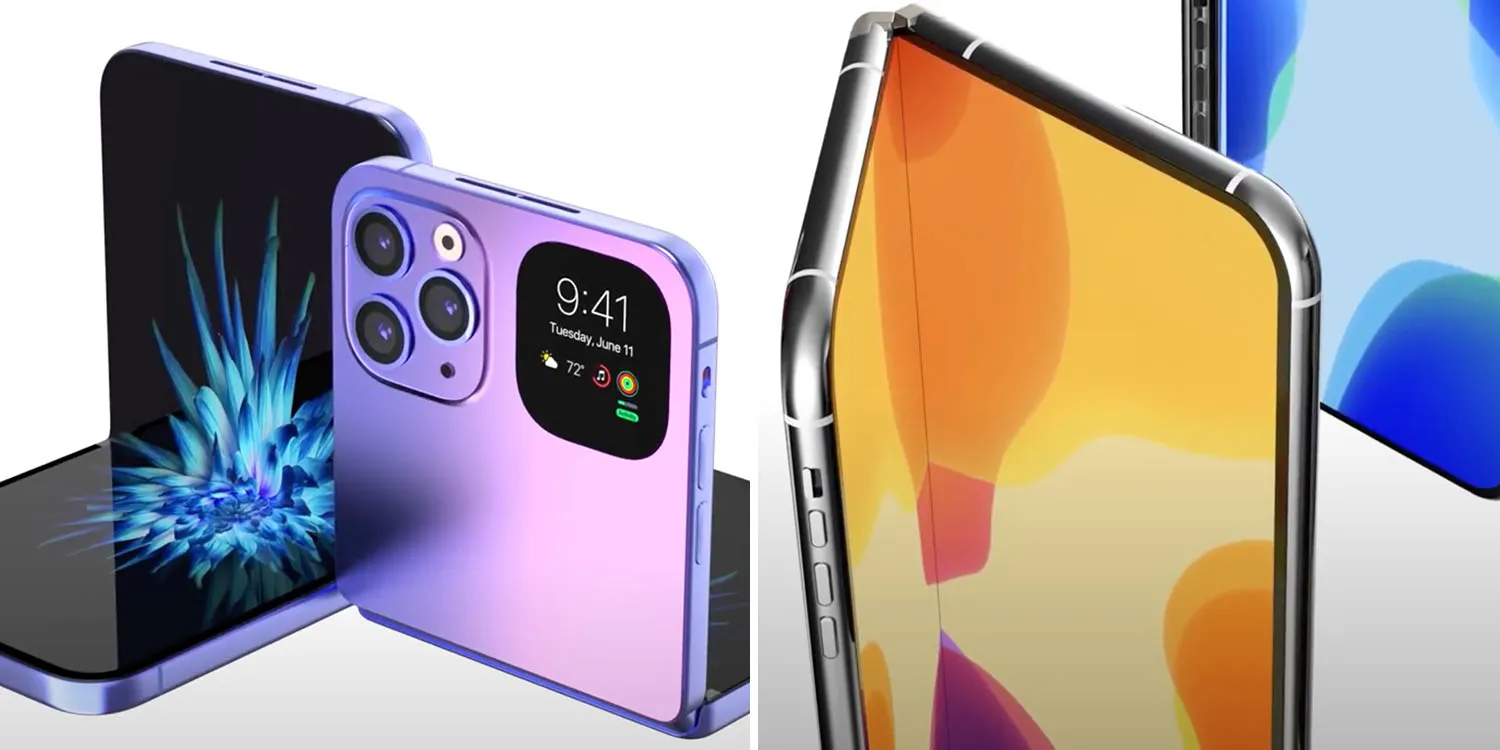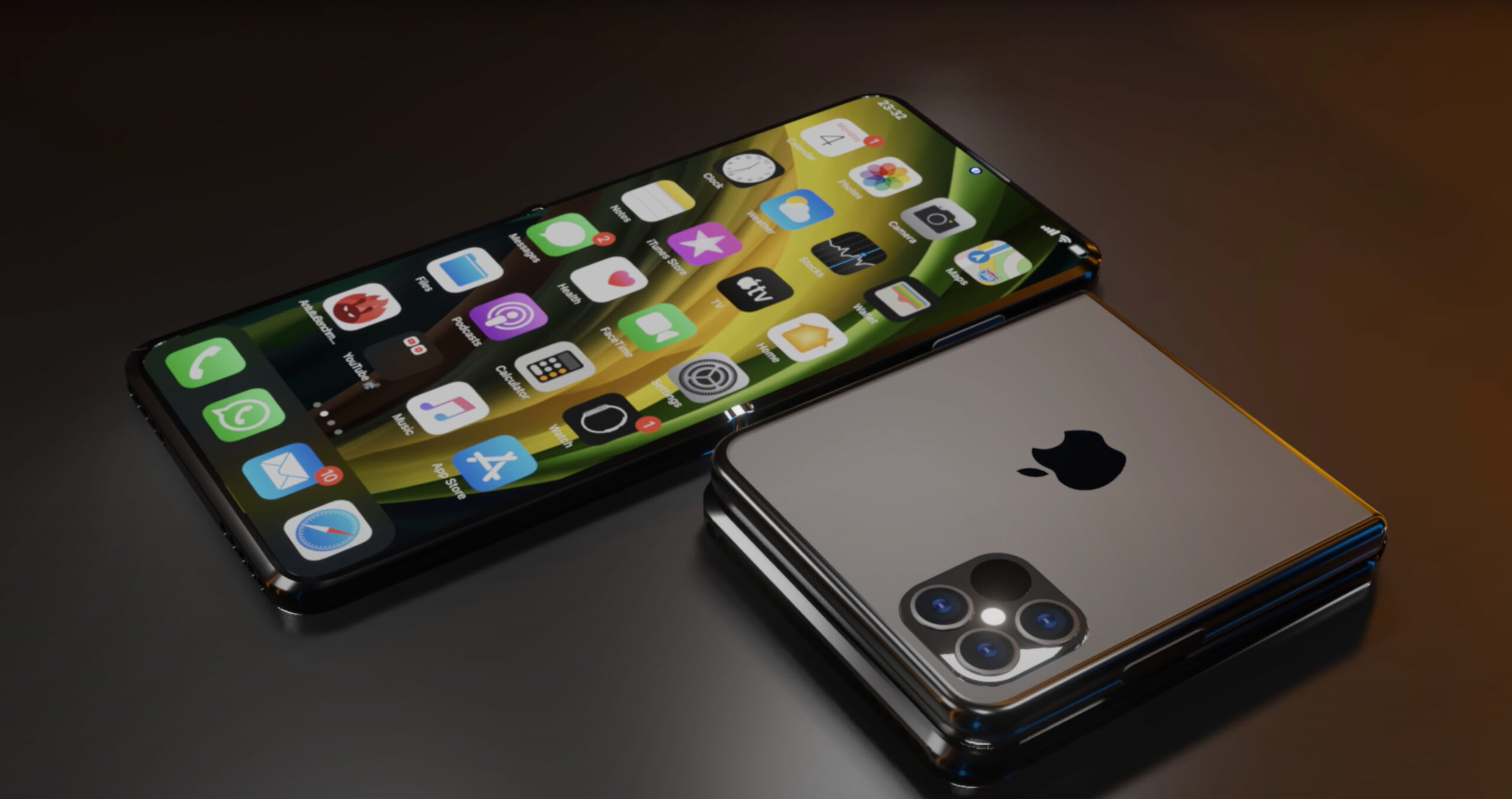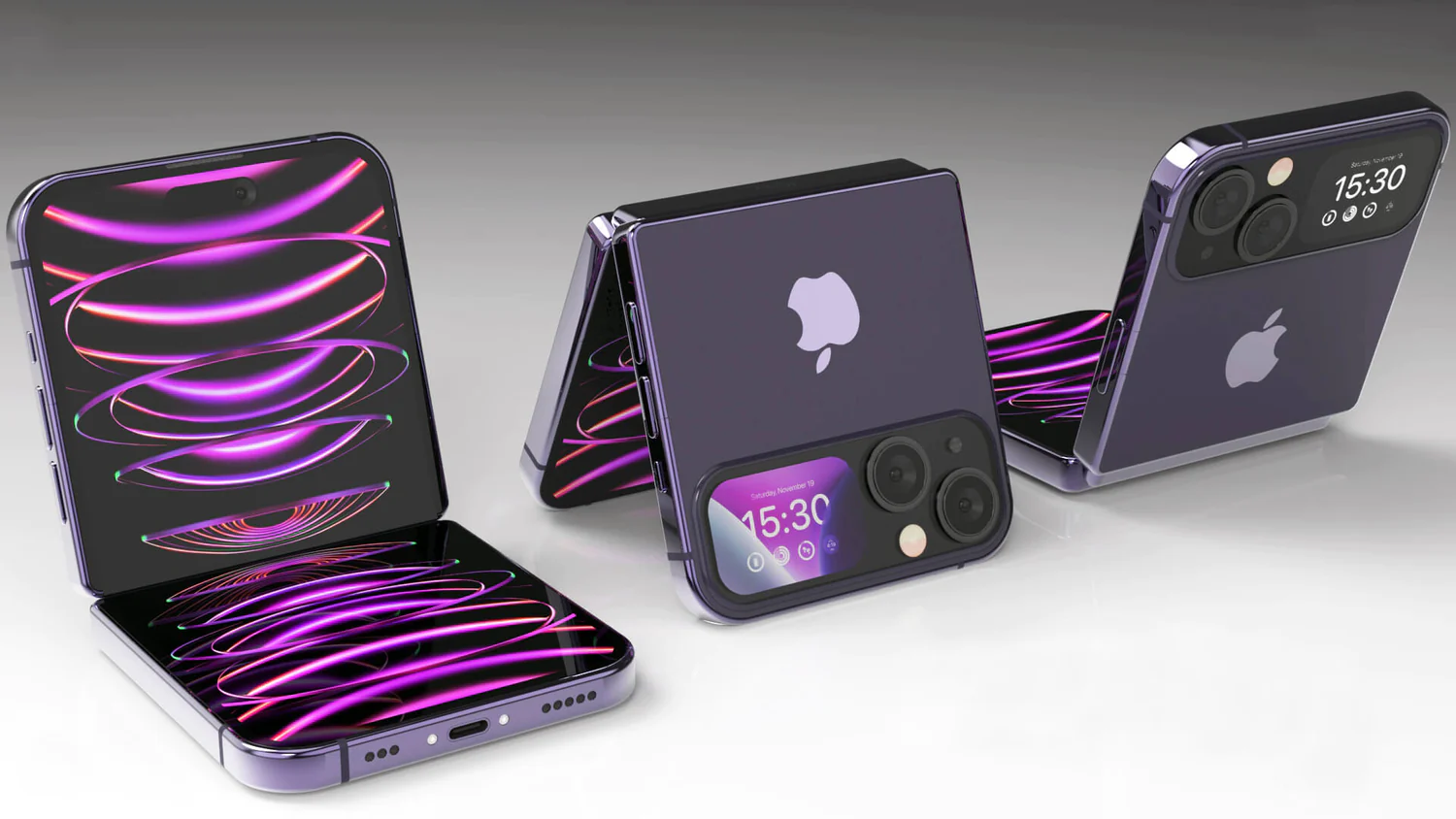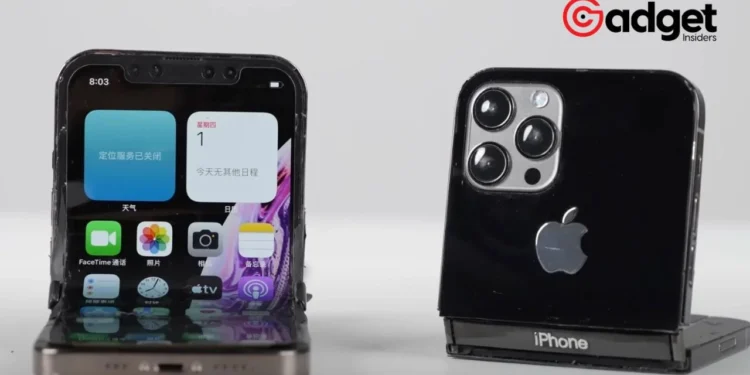In the dynamic world of technology, where innovation is a constant, Apple’s exploration into foldable iPhones and iPads marks a significant turn in its product development trajectory. With the consumer electronics giant delving into this new realm, it’s an exciting time to consider what the future holds for foldable technology, particularly in the realms of foldable iPhones and iPads.
Apple’s Prototyping Phase: Foldable iPhone and iPad
For over half a decade, Apple has been actively experimenting with the concept of foldable iPhones. Sources reveal that the tech giant has been working on two distinct designs, reminiscent of Samsung’s Galaxy Z Flip 5 and Galaxy Z Fold 5.
This initiative, dating back to 2018, initially explored an external display design but was set aside due to technological constraints. Apple’s high standards for display and battery performance were key factors in this decision.

Interestingly, the focus shifted towards a foldable iPhone and iPad, approximately the size of an iPad mini. This pivot suggests a strategic approach, considering a tablet’s less frequent usage compared to a smartphone, thus reducing the demand for extreme durability.
Overcoming Challenges: The Quest for Perfection
One of the critical challenges in foldable technology is the crease that forms where the screen folds. Apple, in collaboration with industry leaders like Samsung and LG, is striving to eliminate this crease for a seamless user experience. This endeavor is crucial, especially considering the compatibility with tools like the Apple Pencil.

The Competitive Landscape: Where Does Apple Stand?
While Samsung led the foldable market with the launch of the Galaxy Fold, Apple’s absence in this segment is noticeable. The foldable market has matured significantly, with devices becoming more accessible and affordable. Apple’s entry into this market, however, remains speculative, with potential launches not expected before 2026.
iOS and iPadOS: The Software Hurdle
A critical aspect of foldable devices is the software experience. Current iterations of iOS and iPadOS lack certain functionalities that would enhance the usability of foldable designs. Competitors like Samsung, OnePlus, and HONOR have advanced in optimizing their software for foldable interfaces. Apple’s software platforms, although robust, still require significant updates to offer a seamless foldable user experience.
Why is Apple not making a foldable iPhone yet? 🤔https://t.co/nVvwezP5Of pic.twitter.com/ZBp3pkm96J
— PhoneArena (@PhoneArena) December 10, 2020
The Current iPhone Lineup: A Glimpse into Apple’s Offerings
As we anticipate the potential foldable devices, let’s take a moment to appreciate Apple’s current lineup:
- iPhone 15: Featuring a 6.1-inch OLED display with Dynamic Island, a dual camera setup, and the Apple A16 Bionic chip, it represents the entry point into Apple’s high-end offerings.
- iPhone 15 Plus: A larger variant with a 6.7-inch OLED display, it mirrors the features of the standard iPhone 15 but offers a more expansive viewing experience.
- iPhone 15 Pro: This model introduces the Apple A17 Pro chipset with 8GB of RAM, showcasing a leap in processing power and camera capabilities.
- iPhone 15 Pro Max: The pinnacle of Apple’s lineup, it boasts a Titanium chassis, an advanced periscope telephoto camera, and is powered by the Apple A17 Pro chipset.
The Road Ahead: What to Expect from Apple
As Apple navigates the foldable device landscape, it’s clear that they are not rushing into this market. Their methodical approach, prioritizing quality and user experience, is typical of Apple’s philosophy. Whether we see a foldable iPhone or iPad remains to be seen, but one thing is certain: Apple’s foray into foldable technology will be a game-changer, redefining what we expect from mobile devices.

While we eagerly await Apple’s next big innovation of foldable iPhones and iPads, the current iPhone range continues to offer a diverse array of choices for consumers, catering to a wide range of preferences and needs. The blend of cutting-edge technology and user-centric design remains Apple’s hallmark, a strategy that will undoubtedly influence their approach to foldable devices. The question remains: when will Apple unfold its next chapter? Only time will tell.










